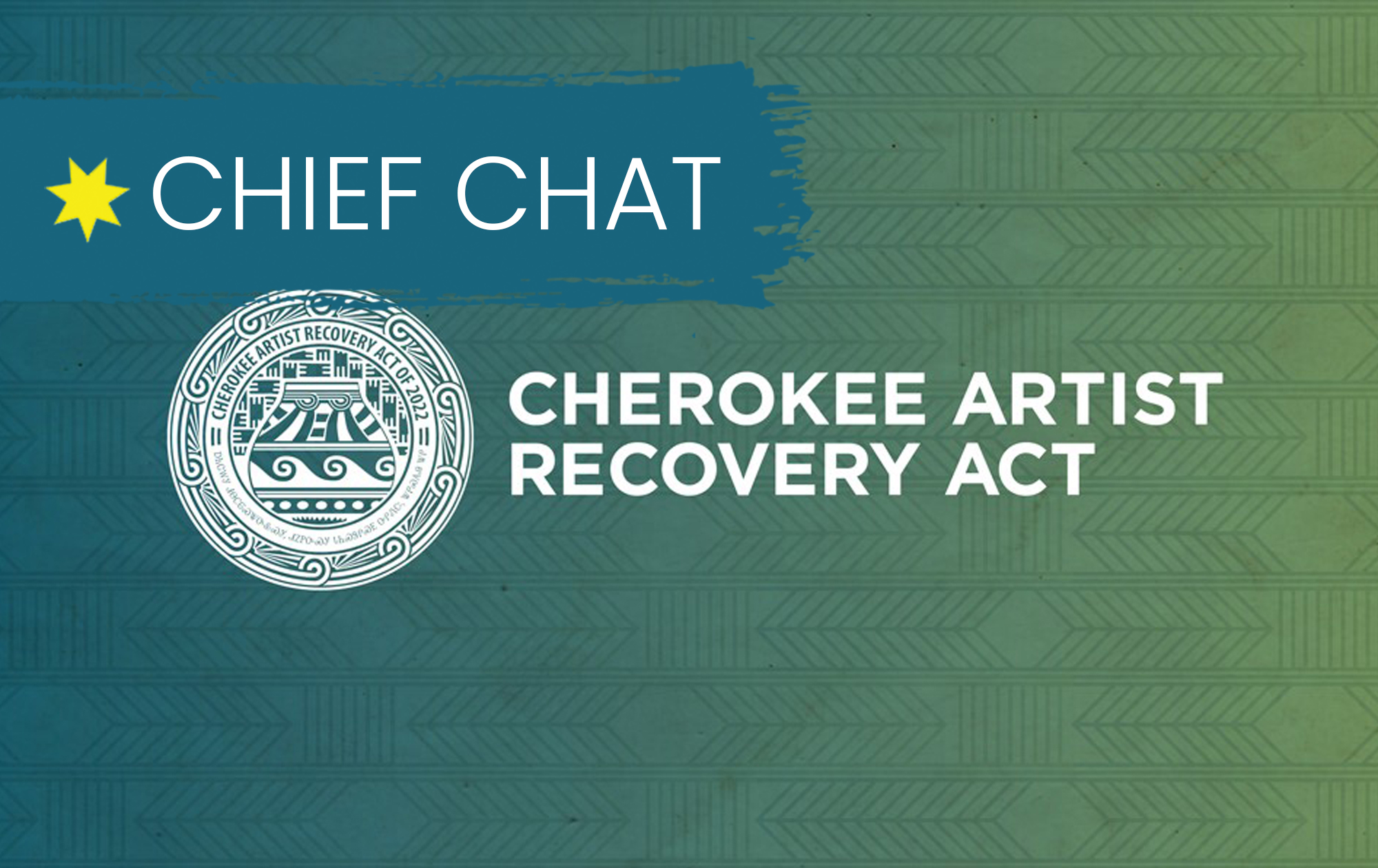Osiyo,
By the end of 2026, we will have invested $4 million dollars into supporting the Cherokee artist community thanks to the Artist Recovery Act, recently extended by the Council of the Cherokee Nation.
The Artist Recovery Act originated at a time when Cherokee artists faced great challenges. The COVID-19 pandemic had closed off many traditional paths to commerce and teaching Cherokee art. This was on top of the pandemic-related economic pressure that fell on all Cherokees. Although Cherokee artists span age ranges, many of our most accomplished artists are elders who faced unique obstacles during those difficult days.
The 2022 Artist Recovery Act extended an economic lifeline to our artist community and helped usher in an era of renewed creativity, teaching and learning. The ARA also enabled us to, collectively, amass a large inventory of new Cherokee art for Cherokees to publicly own and display into perpetuity.
ARA took its inspiration from a piece of federal law from a distant era with similar challenges and aims. The Depression-era Federal Art Project, part of Franklin D. Roosevelt’s New Deal agenda, was a lifeline to the country’s artists when America was in economic free fall. To this day, works from the Federal Art Project adorn public places from coast to coast, part of America’s shared artistic treasures.
As a result of our Artist Recovery Act, Cherokee artists have held almost 150 art classes totaling more than 665 hours, teaching a new generation of Cherokee artists. ARA funded ways to help artists access new streams of commerce using modern techniques, diversify their product portfolio, prepare tax documents and assist them with travel funds and registration fees in order to take their creations to art markets across the country.
Our shared collections of art treasures have also grown. To date, ARA has expended almost $875,000 of the original $3 million investment on new works. We, the Cherokee people, own about 520 additional pieces of Cherokee art from over 165 artisans for display at the more than 100 public facilities we own and operate across the Cherokee Nation Reservation. Our future Wilma P. Mankiller Cherokee Capitol Park in Tahlequah will feature a statue of our late great Chief, funded by ARA.
Deputy Chief Bryan Warner and I recently proposed extending the temporary law a bit more, through 2026 with a funding boost of $1 million. Our proposed boost and extension of ARA was met with unanimous approval by the Council.
In addition to continuing great ARA programs, the act helps fund a new National Art Repository in Stilwell. That facility will serve as a place to temporarily store and repair art, along with gallery and classroom space. Much like the Anna Mitchell Cultural Center in Vinita, the new Stilwell facility will add greater geographic reach of our facilities that support our artistic community.
Cherokee Nation Businesses, which manages ARA programs, has wasted no time since the extension of the act was signed. Just this week CNB issued a general “Call for Art,” the fourth time under ARA, and a special call for art to seek designs of a new Freedmen monument for our historic capitol square. That means these new dollars are being immediately injected into our art community for our shared enrichment.
The law also calls upon us to think far into the future. It requires that my administration issue a final public report on ARA in 2026, outlining success but also recommending whether our nation should continue this unique investment in our artist community.
ARA is far from the only resource Cherokee Nation provides to artists. Our laws already set aside 1% of every construction project for art purchases. Our Cherokee National Treasure program not only highlights the most distinguished of Cherokee artists, but it also gives them avenues to share their incredible knowledge and creativity. Our many art markets and shows have become sought-after venues for artists near and far.
But ARA has done something unique for our collective stake in Cherokee creativity. As we work toward deciding its future, beyond 2026, let us collectively consider whether our short-term pandemic-era Artist Recovery Act should give way to a permanent legal and funding framework for Cherokee art: perhaps an “Artists Resiliency Act.” I would love to hear from my fellow Cherokees on the subject in the years ahead.
Wado,
Chuck Hoskin Jr.
Principal Chief


